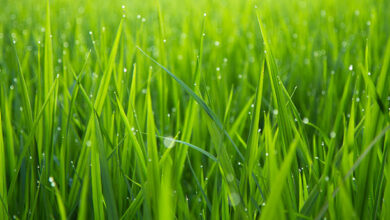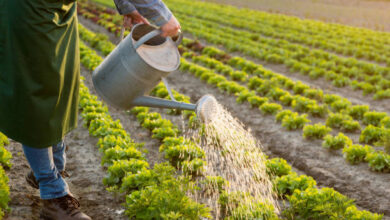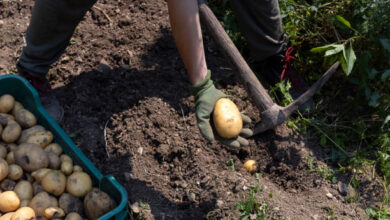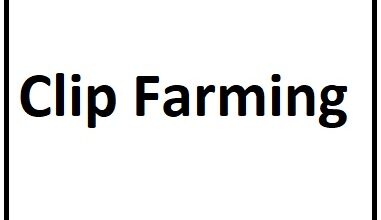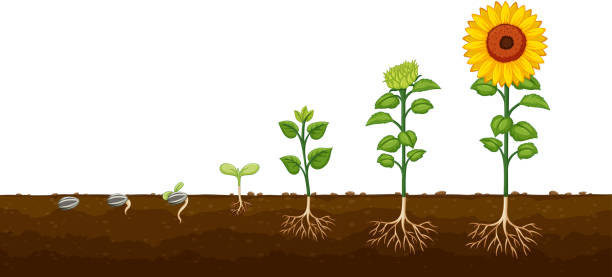
What Are the 7 Parts of a Plant and Their Functions?
Have you ever wondered how plants function and thrive in their environments? In this post, we will explore the seven essential parts of a plant and their unique functions. Understanding these components can enhance your appreciation for plant life and improve your gardening skills.
-
Roots
Brief Overview:
Roots are the foundation of the plant, providing support and nutrient absorption.
Key Points:
Anchor the plant in the soil: Roots firmly anchor the plant, preventing it from being blown away by the wind or washed away by water.
Absorb water and essential minerals from the soil: Through their root hairs, roots take up water and dissolved minerals, which are vital for the plant’s growth and development.
Store food and nutrients: Roots also act as storage organs, keeping food and nutrients for future use, especially during unfavorable conditions.
Supporting Data/Quotes:
“Roots are critical for a plant’s stability and nutrient uptake, playing a key role in its growth and health.”
-
Stems
Brief Overview:
Stems are the main support structure, connecting roots to leaves.
Key Points:
Transport water and nutrients from the roots to other parts of the plant: Stems contain vascular tissues (xylem and phloem) that transport water, nutrients, and food throughout the plant.
Support leaves, flowers, and fruits, positioning them for optimal sunlight: By holding up leaves and flowers, stems ensure they receive adequate sunlight for photosynthesis and pollination.
Store food and water: In some plants, stems can store food and water, aiding survival during droughts.
Supporting Data/Quotes:
“The stem is like the plant’s highway, moving essential elements to where they are needed.”
-
Leaves
Brief Overview:
Leaves are the primary site for photosynthesis and gas exchange.
Key Points:
Capture sunlight to convert into chemical energy through photosynthesis: Leaves contain chlorophyll, which captures sunlight and converts it into energy.
Exchange gases (CO2 and O2) with the environment: Through small openings called stomata, leaves take in carbon dioxide and release oxygen.
Regulate water loss through transpiration: Stomata also help regulate water loss, balancing the plant’s hydration levels.
Supporting Data/Quotes:
“Leaves are the powerhouses of plants, driving the process of photosynthesis.”
-
Flowers
Brief Overview:
Flowers are the reproductive organs of the plant.
Key Points:
Attract pollinators with their color and scent: Flowers use vibrant colors and fragrances to attract insects and animals that help with pollination.
Facilitate the reproduction process through the formation of seeds: Flowers house reproductive organs that enable the formation of seeds.
Produce fruit that houses the seeds: After pollination, flowers develop into fruits that contain seeds.
Supporting Data/Quotes:
“Flowers are not just beautiful; they play a vital role in the continuation of plant species.”
-
Fruits
Brief Overview:
Fruits are the protective vessel for seeds.
Key Points:
Protect seeds and aid in their dispersal: Fruits encase seeds, protecting them until they are ready to be dispersed.
Provide nutrients to developing seeds: Fruits often contain nutrients that support seed development.
Attract animals that help disperse seeds: By being tasty and nutritious, fruits entice animals to eat them, spreading seeds through their droppings.
Supporting Data/Quotes:
“Fruits ensure that seeds have the best chance of spreading and growing into new plants.”
-
Seeds
Brief Overview:
Seeds are the plant’s reproductive units.
Key Points:
Contain the embryo of a new plant: Seeds house the embryo that will grow into a new plant.
Provide food for the developing embryo: Seeds are packed with nutrients to support the young plant until it can produce its own food.
Enable plant species to propagate and spread: Seeds are the primary means by which plants reproduce and spread to new areas.
Supporting Data/Quotes:
“Seeds are the future of plant life, each one a potential new plant waiting to grow.”
-
Bark (if discussing trees) / Buds (if discussing general plants)
Brief Overview:
Bark is the protective outer layer, and buds are growth points.
Key Points (Bark):
Protect the plant from physical damage and disease: Bark shields the plant from pests and environmental damage.
Insulate the plant from extreme temperatures: Bark helps regulate the plant’s internal temperature.
Store and transport nutrients: Bark can also serve as a storage area and transport route for nutrients.
Key Points (Buds):
Contain undeveloped or embryonic shoots: Buds are the starting points for new leaves, flowers, or stems.
Serve as growth points for new leaves, flowers, or stems: Buds ensure the plant continues to grow and reproduce.
Can remain dormant until conditions are favorable for growth: Buds protect the plant’s future growth potential.
Supporting Data/Quotes:
“Bark acts as armor for trees, while buds are the starting points for new growth in many plants.”
You May Love To Read
Are There Baobab Trees in Nigeria? Find Out.
What Planting Zone is Missouri? Your Guide to Gardening Success
Conclusion
We have explored the seven crucial parts of a plant and their functions, highlighting their importance in plant health and growth. Consider observing these parts in your own garden or the next time you encounter a plant, and share your findings or questions in the comments! Understanding plant anatomy can deepen your appreciation for nature and improve your gardening practices.

